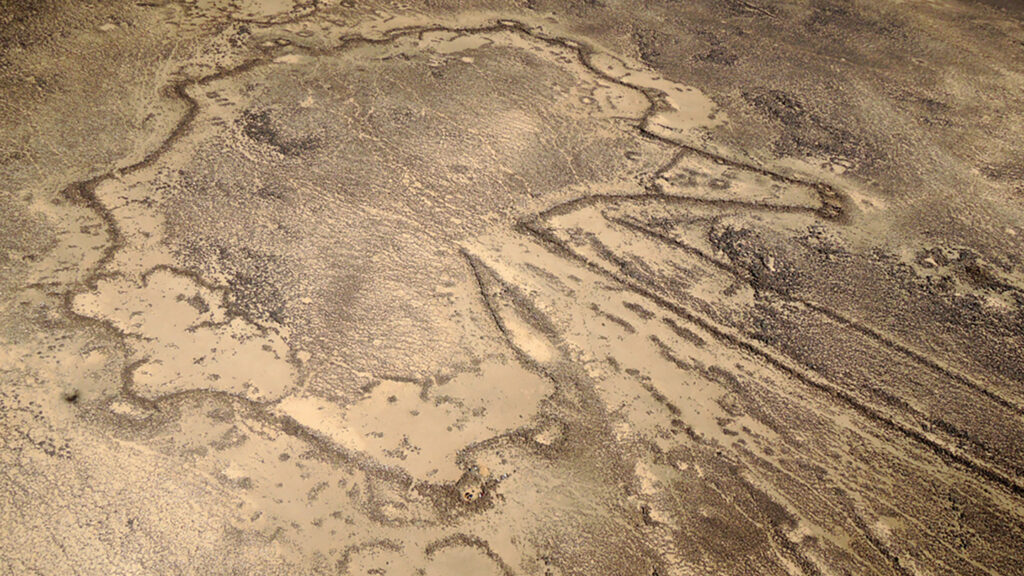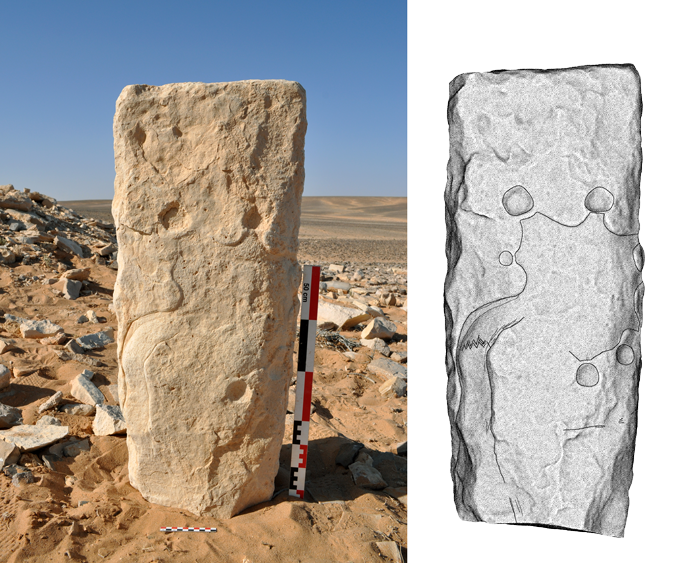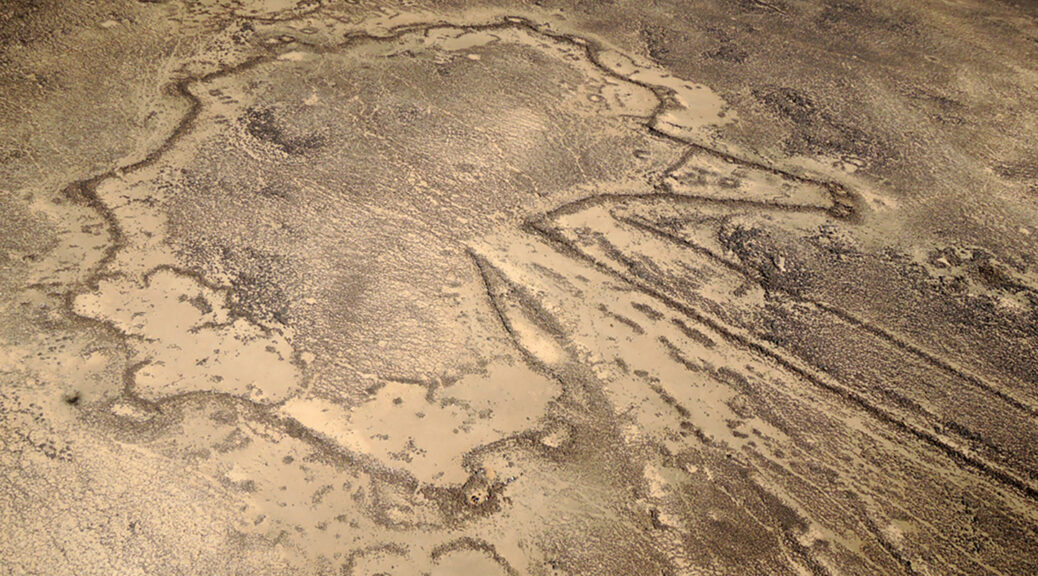The oldest scaled-down drawings of actual structures go back 9,000 years

Two large, engraved stones found in the Middle East display the oldest known building plans drawn to scale, researchers say.
One carved depiction covers part of a rectangular stone found at a Jordanian campsite dating to about 9,000 years ago. Two other engravings were made roughly 8,000 years ago on a boulder discovered at the base of a cliff in Saudi Arabia.
Carvings on these stones depict nearby desert kites, massive structures once used to capture animal herds, scientists report May 17 in PLOS ONE.
Desert kites consist of stone walls up to five kilometers long that narrow into large enclosures surrounded by pits where hunters trapped animals, such as gazelles and deer (SN: 4/18/11). Kite depictions at the two sites closely resemble the shape, layout, and proportions of desert kites found close by, archaeologist Rémy Crassard and colleagues say.
Scale drawings etched in rock may have served as maps that helped hunters plan strategies for driving animal herds into specific desert kites, the scientists report.
These engravings might also have been blueprints for building desert kites, or public displays of their makers’ ability to transfer large, 3-D structures onto small, flat surfaces.

As farming and animal domestication took root in parts of the Middle East, regional hunting groups that built desert kites to trap wild animal herds maintained special regard for massive hunting structures, says Crassard, of the French National Center for Scientific Research in Lyon.
Other ancient maps and structural plans, intended as scaled-down drawings, date to about 4,300 years ago in Mesopotamia. Those depictions, Crassard says, were not as accurate as the newly discovered desert kite engravings.
